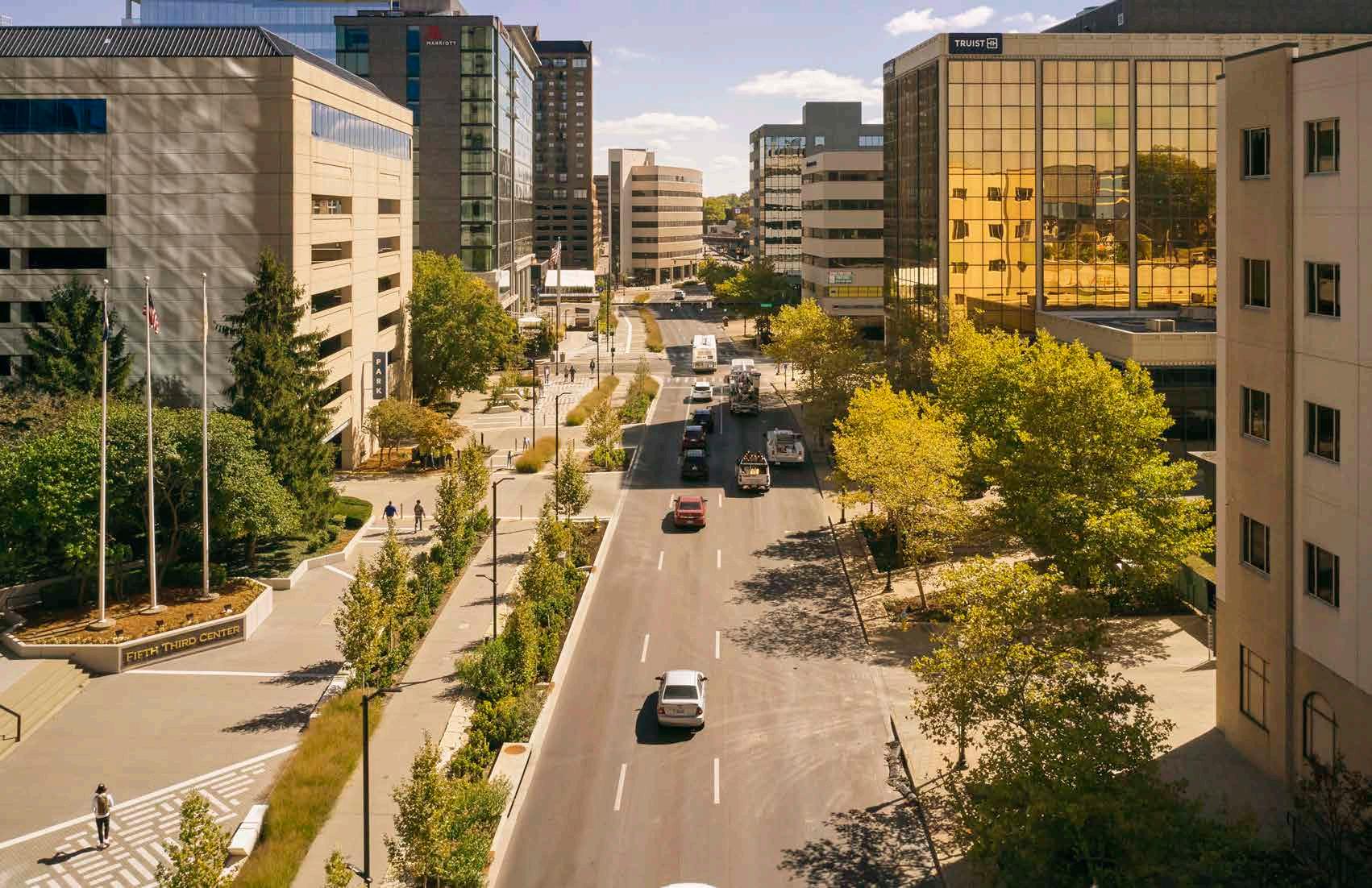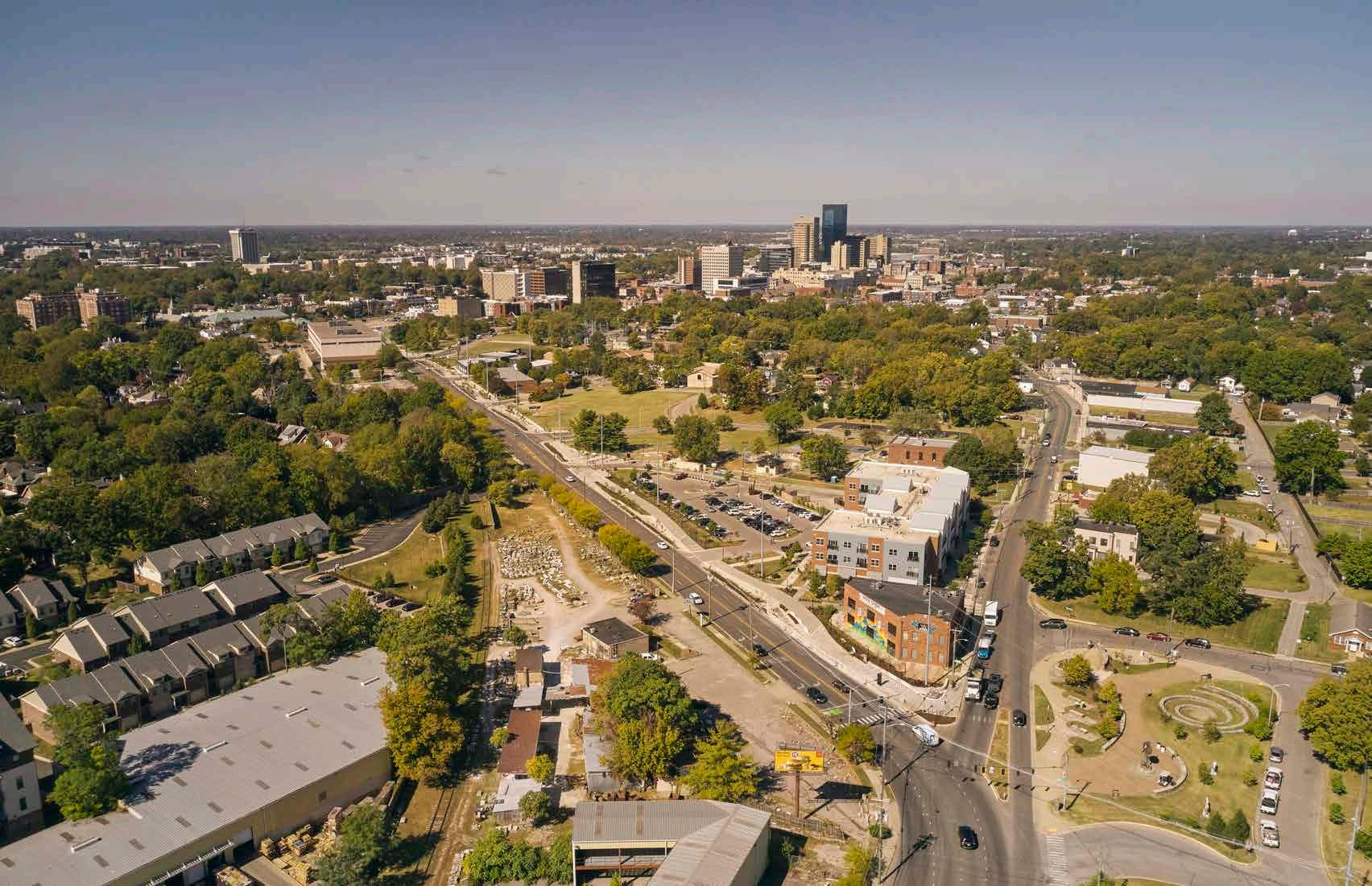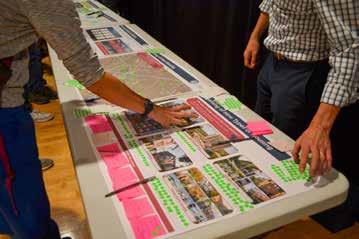









Through this plan, we are working with residents, businesses, students, and visitors to continue making downtown the heart of the Bluegrass. Through an extensive local outreach process that includes community events, online surveys, and in-person activities, we are planning together to establish an actionable vision and strategies for Downtown Lexington.
The City of Lexington (LFUCG) has commissioned the Downtown Area Master Plan, and will be leading the planning effort with a team of urban planning, design, economic, and transportation consultants.







We will plan together to accomplish the following:
Establish a community-supported defined downtown area.
A Housing and Market Conditions Analysis Report that evaluates demand, development potential, and strategies for affordability and growth.
Recommendations for updated Zoning Regulations.
Mobility and Connectivity improvements to make downtown a more walkable and bikable place.
Recommendations for opportunities for funding, including both private and governmental sources.
An actionable implementation plan with defined roles, timelines, funding opportunities, and performance metrics to guide execution.
The Lexington Downtown Area Master Plan’s yearlong process will take place through six (6) task phases.
Task 0 - Project Startup and Coordination
Task 1 - Existing Conditions Analysis
Task 2 - Housing and Market Analysis
Task 3 - Public Engagement
Advisory Committee Meetings
Stakeholder Interviews
Targeted Neighborhood Engagement
Community Meetings
Online Engagement
Nontraditional and Creative Engagement
Task 4 - Plan Development
Task 5 - Draft Report
Task 6 - Deliverables

What We’ve Heard and What’s to Come
Community engagement is the foundation of a good planning process.
We will use a variety of strategies to reach different groups and perspectives throughout the Master Plan Process.
Three Community Workshops
Adjacent/Nearby Neighborhood Engagement
Stakeholder Interviews (Aug. 10-12)
Pop-Ups And Creative Engagement
Led by LFUCG, guided by the Advisory Committee
The planning team has attended a variety of community events/festivals, as well as neighborhood meetings, since the plan’s launch in July. These have included:

Fourth of July Festival & Market
BCNA Board Meeting
Gatton Park Opening
Phoenix Park Ribbon Cutting Jazz In the Park
Pralltown Day Roots and Heritage Festival
Williams Wells Brown
Neighborhood Association Mtg.
Division of Police
Black & Williams Neighborhood
Center Advisory Board Meeting
UK SGA
Field Day BCTC
Fayette County
Complete Streets and Vision Zero Government Employee Night
Neighborhood Council
The planning team facilitated one-hour roundtable discussions with 100+ Lexington stakeholders representing a wide range of downtown interests, including:

Food and Beverage Employees/Owners
Transportation
Specialists
Places of Worship, Nonprofits, Social Services
Downtown
Retailers
Developers, Realtors, Property Owners
Public & Education Institutions
LFUCG
Arts and Culture
Neighborhoods
The planning team has hosted our first of three community meetings on October 8 at the Lyric Theatre & Cultural Arts Center. Attended by more than 200 people, this event included various interactive activities addressing downtown opportunities.



200+ Lexington rsidents, visitors, and students!


Over the past few months, the planning team has been listening to people across Lexington. Up to now, the team has:
Led stakeholder group discussions
Attended and tabled at community events
Hosted an online survey with paper versions Had one-on-one conversations
Hundreds of Lexington residents, visitors, and community leaders have already shared their thoughts and added thousands of comments. Their comments are summarized in a set of emerging themes representing what we have heard so far.
Downtown is special.
It is rich in history and diversity. It is a natural hub for bringing people together across the region.

Safety and connections are concerns for those biking and walking.
People want safer intersections, smoother sidewalks, fewer blocked walkways, and traffic patterns that slow car speeds.
For businesses to thrive, there needs to be more people living downtown to support them. We need to add more housing options and reimagine surface parking lots for better use. These are two things that can help generate energy and opportunity downtown.
Downtown needs better transportation infrastructure. This means more convenient and reliable options for all modes. Lots of good signage would really help other parts of the community connect to the goods and services downtown.
Lexington’s unhoused population is a top concern.
Many people - visitors, residents, businesses - feel Lexington needs to address root causes. They also say Lexington needs stronger partnerships and funding for social service agencies. We need more community resources and support systems that lead to long-term solutions.

Downtown is a gathering place for people in Lexington and surrounding communities.
Downtown needs more inviting spaces, places, and events and these must appeal to all ages, demographics, and cultures.
Lexington needs to build more housing that more people can actually afford.
The downtown area can play a role in this.
When people visit downtown, they sometimes face challenges.
Parking systems can be confusing or inaccessible. Lack of good signage hinders people from exploring. Litter and overflowing garbage make a bad impression. These things limit the success of retail and recreation downtown.
The plan must be realistic. It should be backed by short and long term changes. We need new policy, more funding, and stronger partnerships. We also need quick, visible results.

